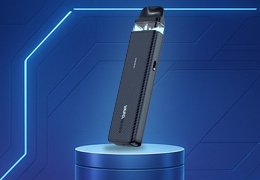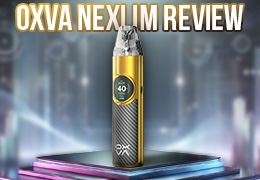
Filter Products
Brand
Battery Capacity
Fill Type
Kit Type
Puff Count
Vape Kits
Find the vape kit that suits you best with our 2025 collection of refillable vape devices here at UK Vape Scene. Get cheap refillable vape starter kits perfect for beginners, or more advanced sub-ohm devices which are great for experienced users.

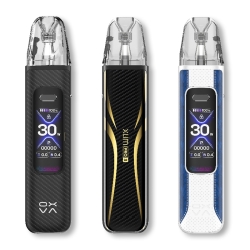
OXVA XLIM Pro 3 Pod Kit
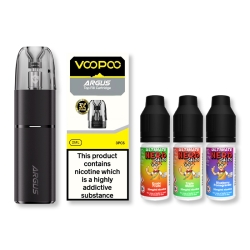
Voopoo Argus G3 Mini Bundle Deal
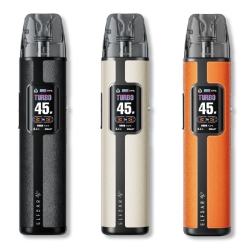
Elf Bar ELF X Pro Classic Edition Pod Kit

SMOK Zrex RF Pod Vape Kit

SMOK X-Priv Solo Vape Kit

SMOK X-Priv Plus Vape Kit

SMOK Novo GT Pod Kit

SMOK Novo GT Box Pod Kit

SMOK Novo ECO Pod Kit

SMOK Mavic Pro RF Pod Kit

SMOK Arco E1 Pod Kit

SMOK Arco Digi Pod Kit
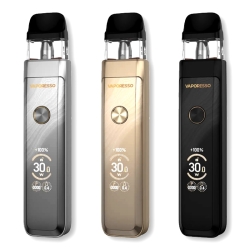
Vaporesso XROS Pro 2 Pod Kit

Oxva SlimStick Prefilled Pod Kit

Voopoo Argus G3 Mini Pod Kit

Uwell Caliburn G4 Mini Pod Kit

Aspire Zelos M80 Kit

Oxva Xlim Go 2 Pod Kit

Uwell Caliburn G4 Pro Pod Vape Kit

Hayati Pro Ultra Plus 25k Prefilled Pod Kit

Vaporesso Dojo Blast 10k Prefilled Pod Kit

VooPoo Vinci E80 Pod Kit

VooPoo Argus Matrix Pod Vape Kit
Everything You Need to Know About Vape Kits
Choosing the right vape kit is the most crucial step in beginning your journey through vaping. There are many options available, which can be confusing and overwhelming to navigate for beginners. To best find the vape kit that’s right for you it’s important to assess what exactly it is you want out of vaping. Let’s begin by explaining…
What is a vape kit?
The term ‘vape kit’ refers to a device designed for the purpose of atomising e-liquid, delivering vapour and optionally nicotine to aid with smoking cessation. Vape kits are made up of a few key components namely a coil for heating the e-liquid, a tank to contain the liquid and a battery device for delivering power to the coil.
What’s the best vape kit for me?
This is a question a lot of new vapers ask themselves when swamped with the various vape kit options available for purchase. From MTL (mouth-to-lung) pod kits to DTL (direct-to-lung) sub-ohm devices there are so many options to choose from, so let’s go over the main ones and who they’re for.
Pod Vape Kits and Starter Kits
Arguably the most popular vape device type currently being sold. Pod kits work by using a self-contained tank and coil combination known as a ‘pod’ and a battery device. These devices are typically made for ‘MTL’ vaping which provides a tight ‘cigarette-like’ draw making them a great choice for ex-smokers or beginners looking to get started with vaping. The best e-liquid pairing for this type of device would be a 50/50 VG/PG liquid like nic salts or freebase liquids.
Sub-Ohm Vape Kits
These types of devices are often associated with higher wattages and large cloud production. Sub-ohm vape kits are preferred by more advanced vapers and those who prefer a more airy hit. These types of vape kits are best used with high-VG liquids like shortfills. Sub-ohm vape kits work through an inhalation method called ‘DTL’ which differs from ‘MTL’ by pulling vapour into your lungs first, which differs to how you would puff on a cigarette for example.
Rebuildable Vape Kits (RTAs/RDAs)
RTAs or RDAs are the most advanced and custom type of vape kit available on the market. RDA’s allow you to build your own custom coils with different wicking materials, custom battery layouts and chassis. This sort of vape kit is mostly exclusive to hobbyists and enthusiasts who have developed a knowledge of the inner workings of vape devices and have the required skills to maintain a device like this. To put this simply if a pod vape kit is a Toyota Prius then and RDA would be a kit car.
How much does a vape kit cost?
On average vape kits cost between £10 - £50, with some models being cheaper or more expensive depending on the brand and features. A budget vape kit we recommend is the Oxva Xlim Go 2, a straightforward device that's great for beginners. On the other end of the spectrum we recommend the Aspire Zelos M80 which offers a solid sub-ohm experience.
Why should I buy my vape kits from UK Vape Scene?
We offer a huge selection of vape kits that will suit the preferences of most vapers. All of our products are selected for quality and reliability, meaning we stock only trusted brands we would use ourselves. Another reason to buy your vape kits from us is our various promotions such as our bundle deals and free e-liquid offers. If you ever have an issue with your vape kit and want assistance with setup, maintenance or troubleshooting our team of experts are more than happy to help simply contact us using our email contact form.
Related Blog Articles
Caliburn G4 Pro An In-Depth Review
An all new touch-screen vape from Uwell! But is it any good? Find out in this in-depth review where we go over the...
The Vaporesso Xros 5 Mini - is it any good? Here’s my thoughts after 3 months.
The Vaporesso Xros 5 Mini has been out for a while now, want to know what I think of the device after using it every...
Top 5 vape kits to switch to after the disposable vape ban
With the disposable vape ban coming into effect soon, what should you do next? Read on and find out the top 5 kits...
Oxva NeXlim Pod Kit - An Honest Review
The next generation of pod kits is here! Find out about the new OXVA NeXlim vape kit.


